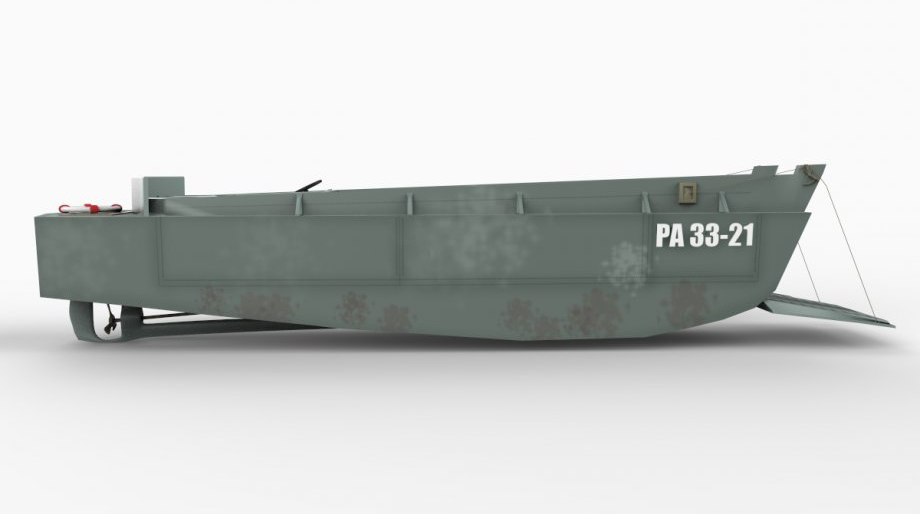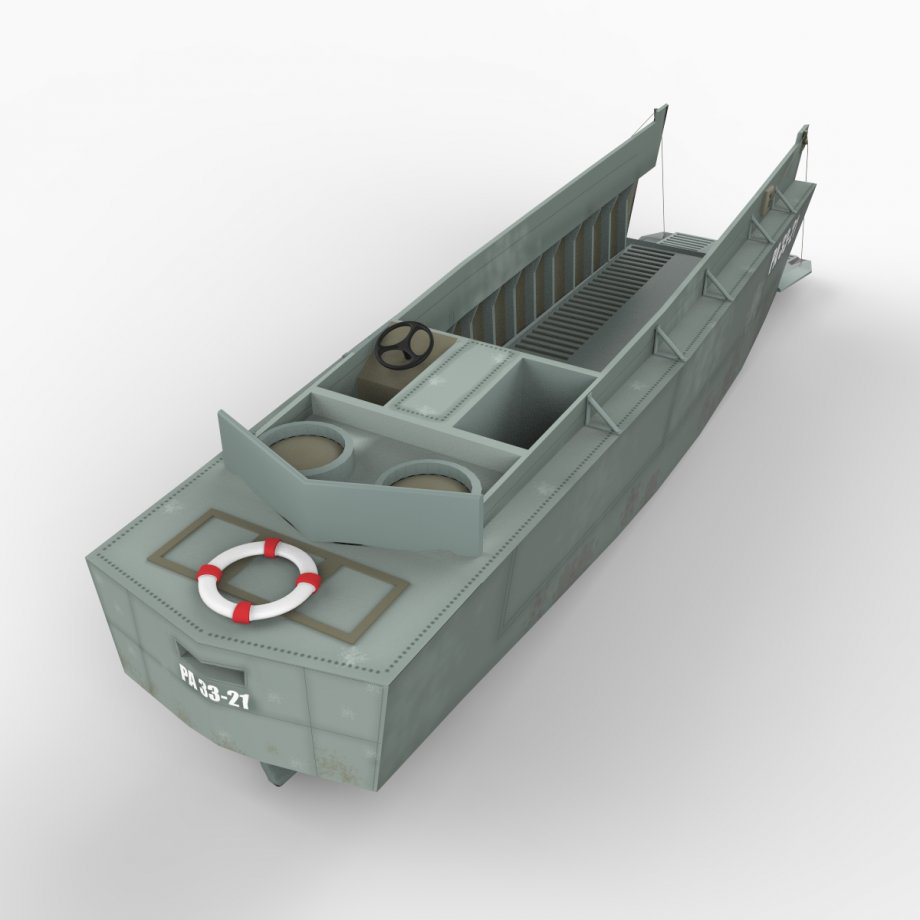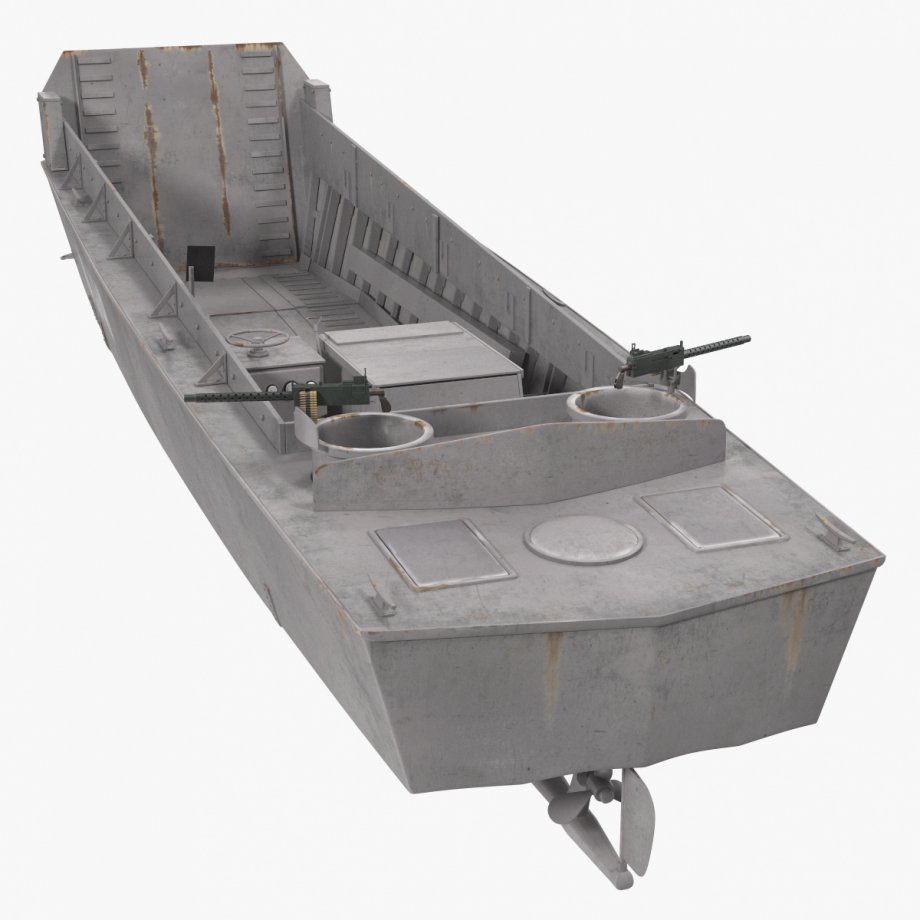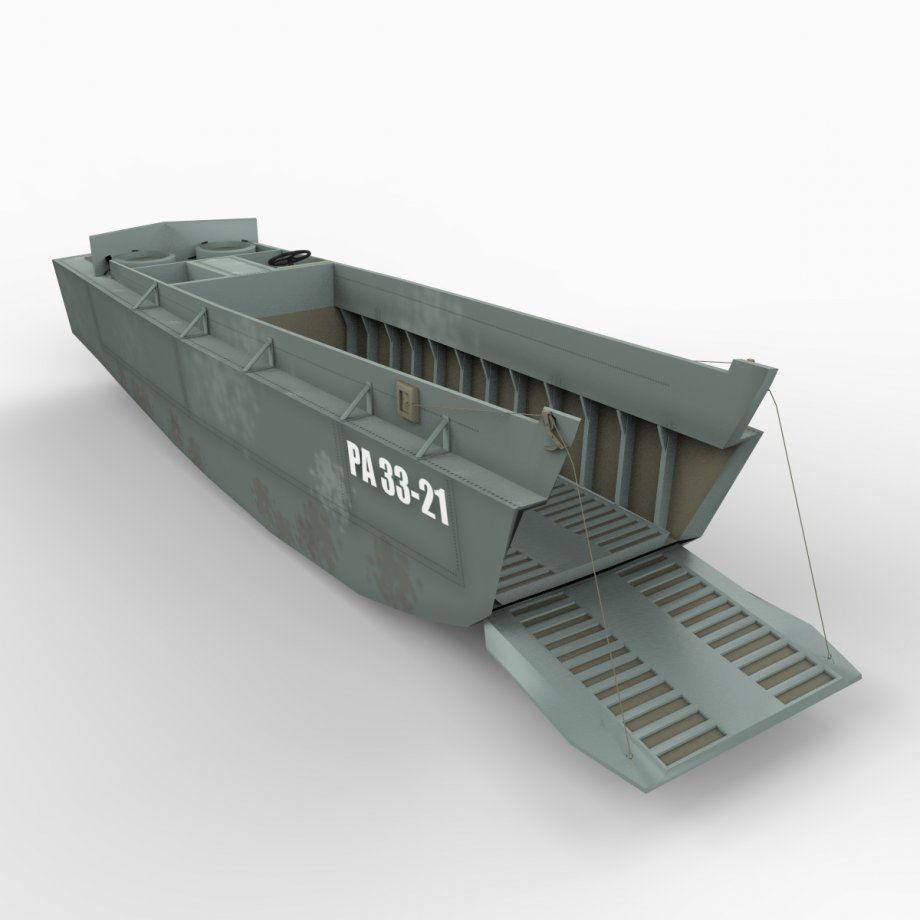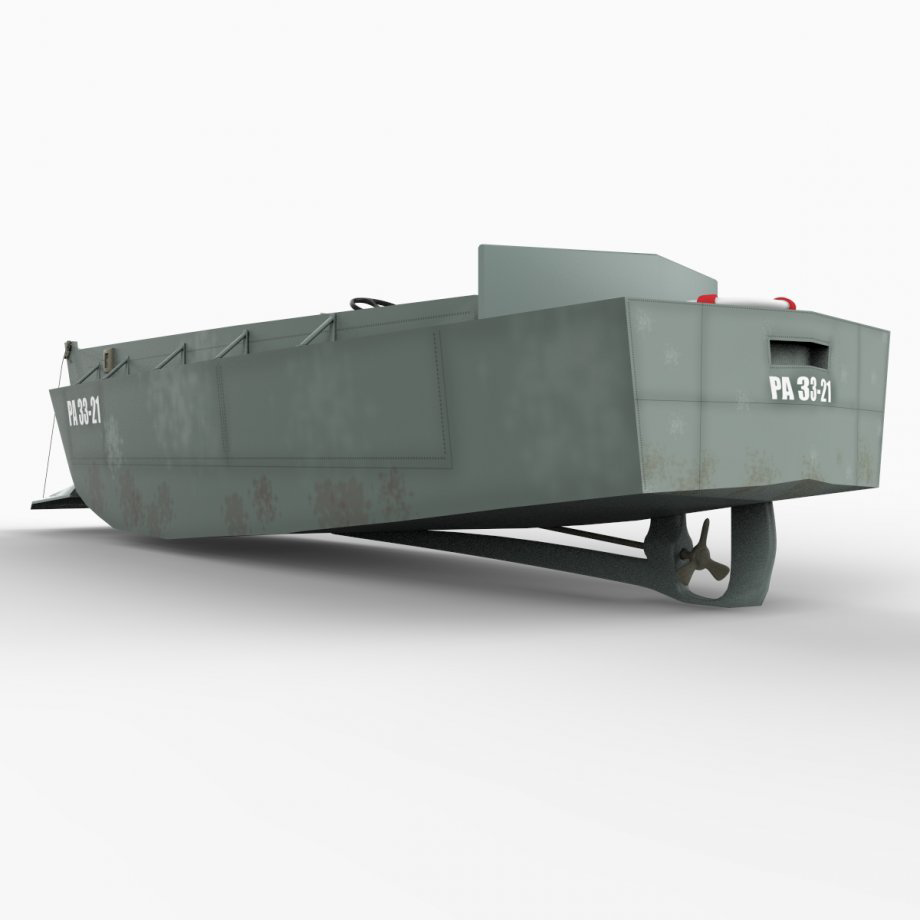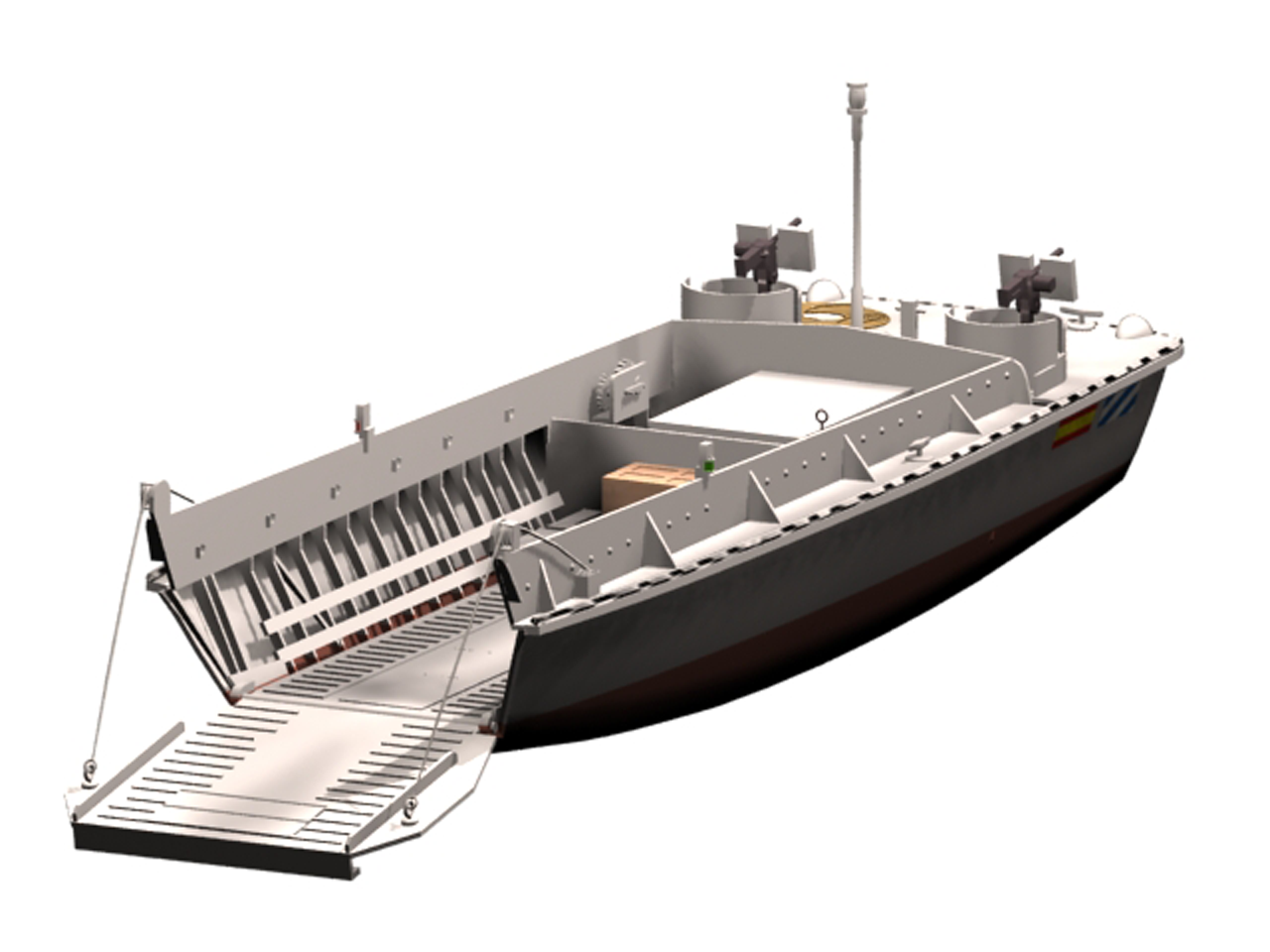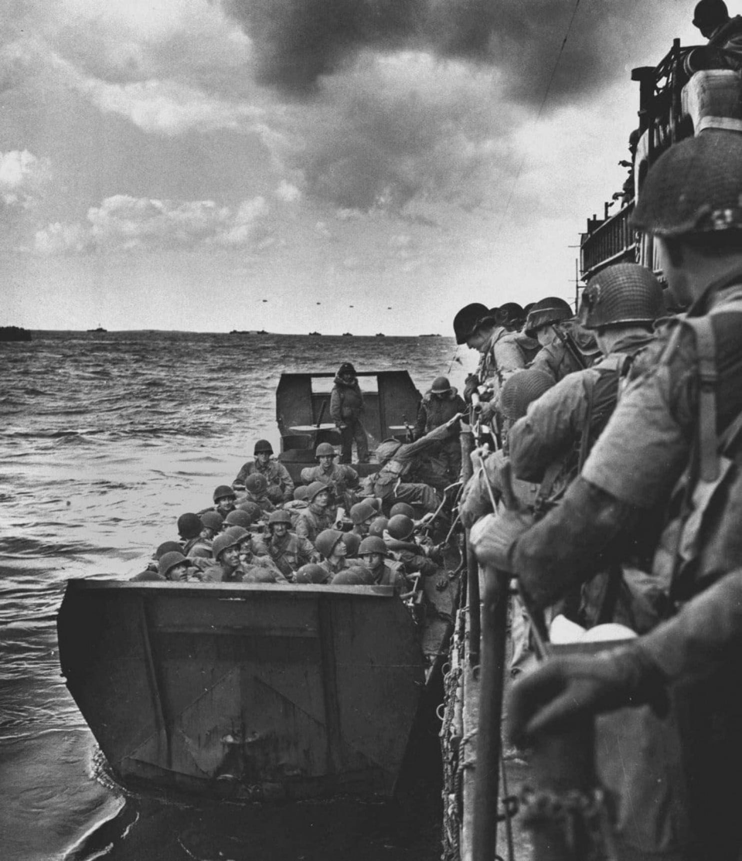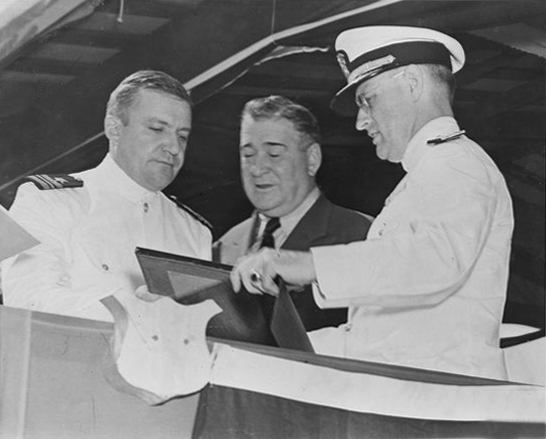

Higgins Boat
Landing Craft, Vehicle, Personnel (LCVP)
The landing craft, vehicle, personnel (LCVP) or 'Higgins boat,' was a landing craft used extensively in amphibious landings in World War II. The craft was designed by Andrew Higgins based on boats made for operating in swamps and marshes. More than 23,358 were built, by Higgins Industries and licensees. Typically constructed from plywood, this shallow-draft, barge-like boat could ferry a roughly platoon-sized complement of 36 men to shore at 9 knots (17 km/h). Men generally entered the boat by climbing down a cargo net hung from the side of their troop transport; they exited by charging down the boat's lowered bow ramp.
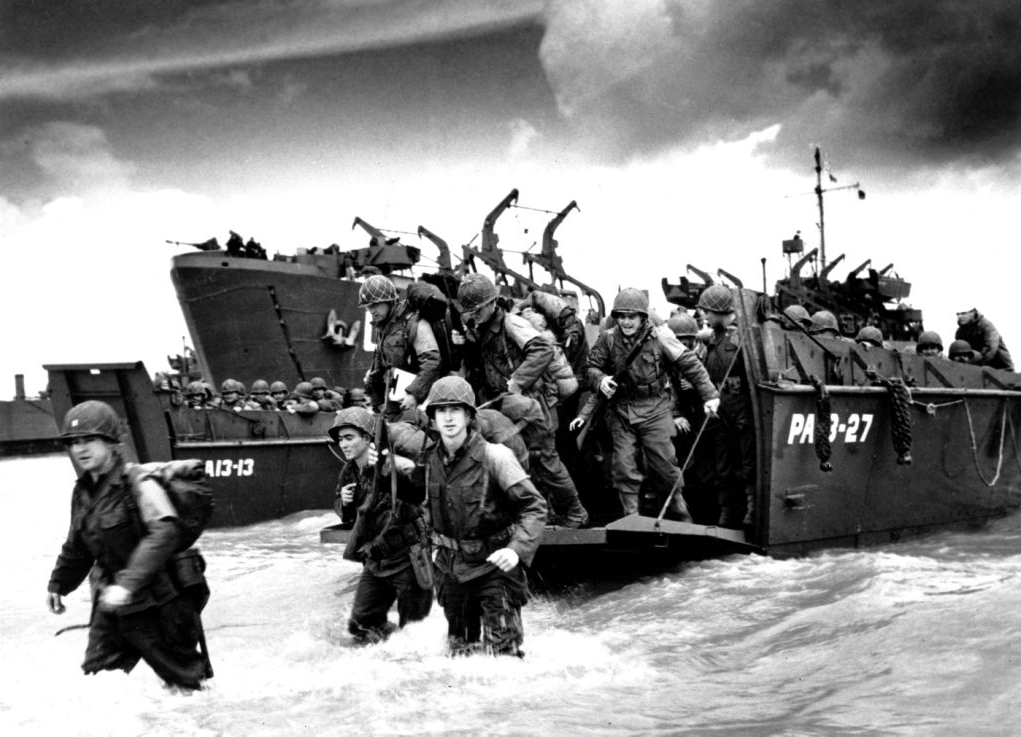
Design History
Andrew Higgins started out in the lumber business, but gradually moved into boat building, which became his sole operation after the lumber transport company he was running entered bankruptcy in 1930. Many sources say his boats were intended for use by trappers and oil-drillers; occasionally, some sources imply or even say that Higgins intended to sell the boats to individuals intending to smuggle illegal liquor into the United States.
Higgins' financial difficulties, and his association with the U.S. military, occurred around the time Prohibition was repealed, which would have ruined his market in the rum-running sector; the U.S. Navy's interest in the boats was in any case providential, though Higgins proved unable to manage his company's good fortune.
The United States Marine Corps, always interested in finding better ways to get men across a beach in an amphibious landing, and frustrated that the Navy's Bureau of Construction and Repair could not meet its requirements, began to express interest in Higgins' boat. When tested in 1938 by the Navy and Marine Corps, Higgins' Eureka boat surpassed the performance of a Navy-designed boat, and was tested by the services during fleet landing exercises in February 1939. Satisfactory in most respects, the boat's major drawback appeared to be that equipment had to be unloaded, and men disembarked, over the sides, thus exposing them to enemy fire in combat situations and making unloading time consuming and complex. However that was the best available boat design and it was put into production and service as the landing craft, personnel (large), abbreviated as LCP(L). The LCP(L) had two machine gun positions at the bow.
The Japanese had been using ramp-bowed landing boats like Daihatsu-class landing craft in the Second Sino-Japanese War since the summer of 1937 — boats that had come under intense scrutiny by Navy and Marine Corps observers at the Battle of Shanghai in particular, including from future general, Victor H. Krulak. When Krulak showed Higgins a picture and suggested that Higgins develop a version of the ramped craft for the Navy, Higgins, at his own expense, started his designers working on adapting the idea to the boat design. He then had three of the craft built, again at his own expense.
On May 26, 1941, Cdr. Ross Daggett, from BuShip, and Maj. Ernest Linsert, of the Marine Equipment Board, witnessed the testing of the three craft. One involved off-loading a truck; another the embarking and disembarking of 36 of Higgins' employees, simulating troops. This craft later was designated LCVP—Landing Craft Vehicle, Personnel.
At just over 36 ft (11 m) long and just under 11 ft (3.4 m) wide, the LCVP was not a large craft. Powered by a 225-horsepower Diesel engine at 12 knots, it would sway in choppy seas, causing seasickness. Since its sides and rear were made of plywood, it offered limited protection from enemy fire but also reduced cost and saved steel. The Higgins boat could hold either a 36-man platoon, a jeep and a 12-man squad, or 8,000 lb (3.6 t) of cargo. Its shallow draft (3 feet aft and 2 feet, 2 inches forward) enabled it to run up onto the shoreline, and a semi-tunnel built into its hull protected the propeller from sand and other debris. The steel ramp at the front could be lowered quickly. It was possible for the Higgins boat to swiftly disembark men and supplies, reverse itself off the beach, and head back out to the supply ship for another load within three to four minutes.
During the war years, the Higgins boat was built in New Orleans and all workers, white, black, male, female, were paid the same wage based on their job position.
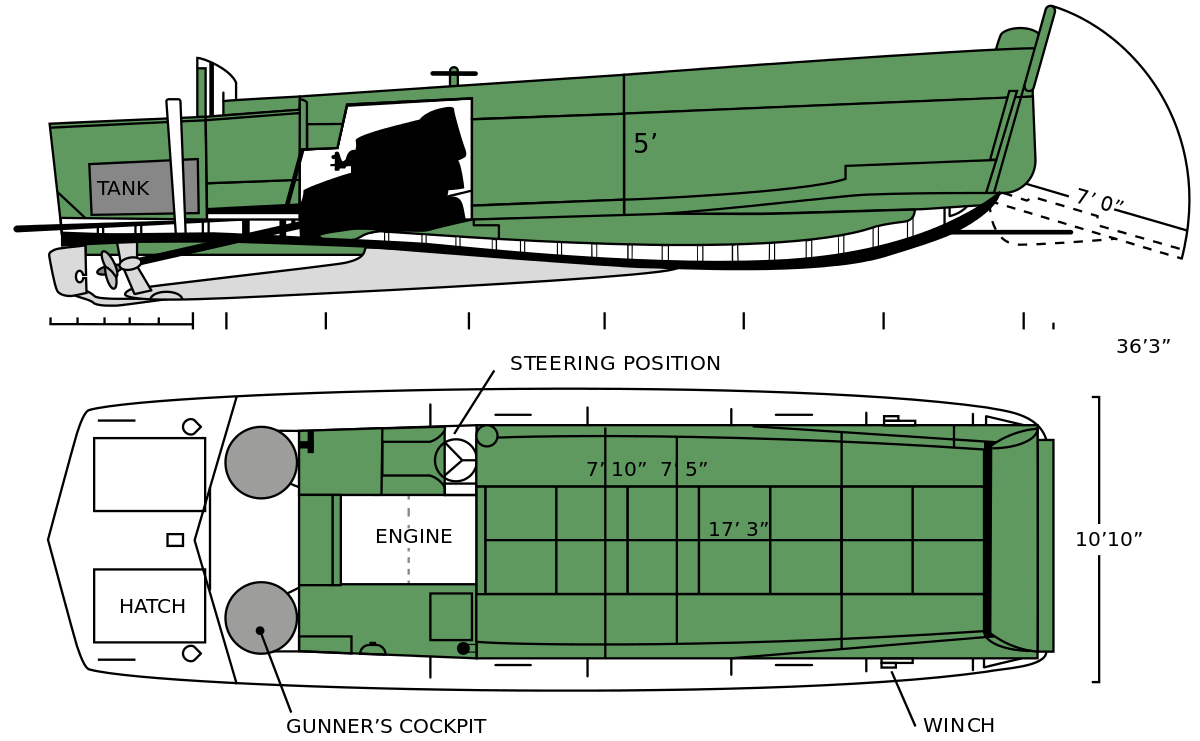
Click to zoom.
Builder:
Operator:
Built:
Completed:
Higgins Industries, New Orleans, LA
United States Navy
1942-1945
23,350 +
Type:
Displacement:
Length:
Beam:
Draft:
Propulsion:
Speed:
Capacity:
Troops:
Crew:
Armament:
Landing Craft, Vehicle, Personnel (LCVP)
18,000 lb, (8,200 kg) light
36 ft 3 in (1.05 m)
10 ft 10 in (3.30 m)
3 ft (0.91 m) aft
2 ft 2 in (0.66 m) forward
Gray Marine 6-71 Diesel Engine, 225 hp (168 kW) or Hall-Scott gasoline engine, 250 hp (186 kW)
12 knots (14 mph; 22 km/h)
6,000 lb (2,700 kg) vehicle or 8,100 lb (3,700 kg) general cargo
36 troops
4: Coxswain, engineer, bowman, sternman
2 x .30 cal. (7.62) Browning machine guns
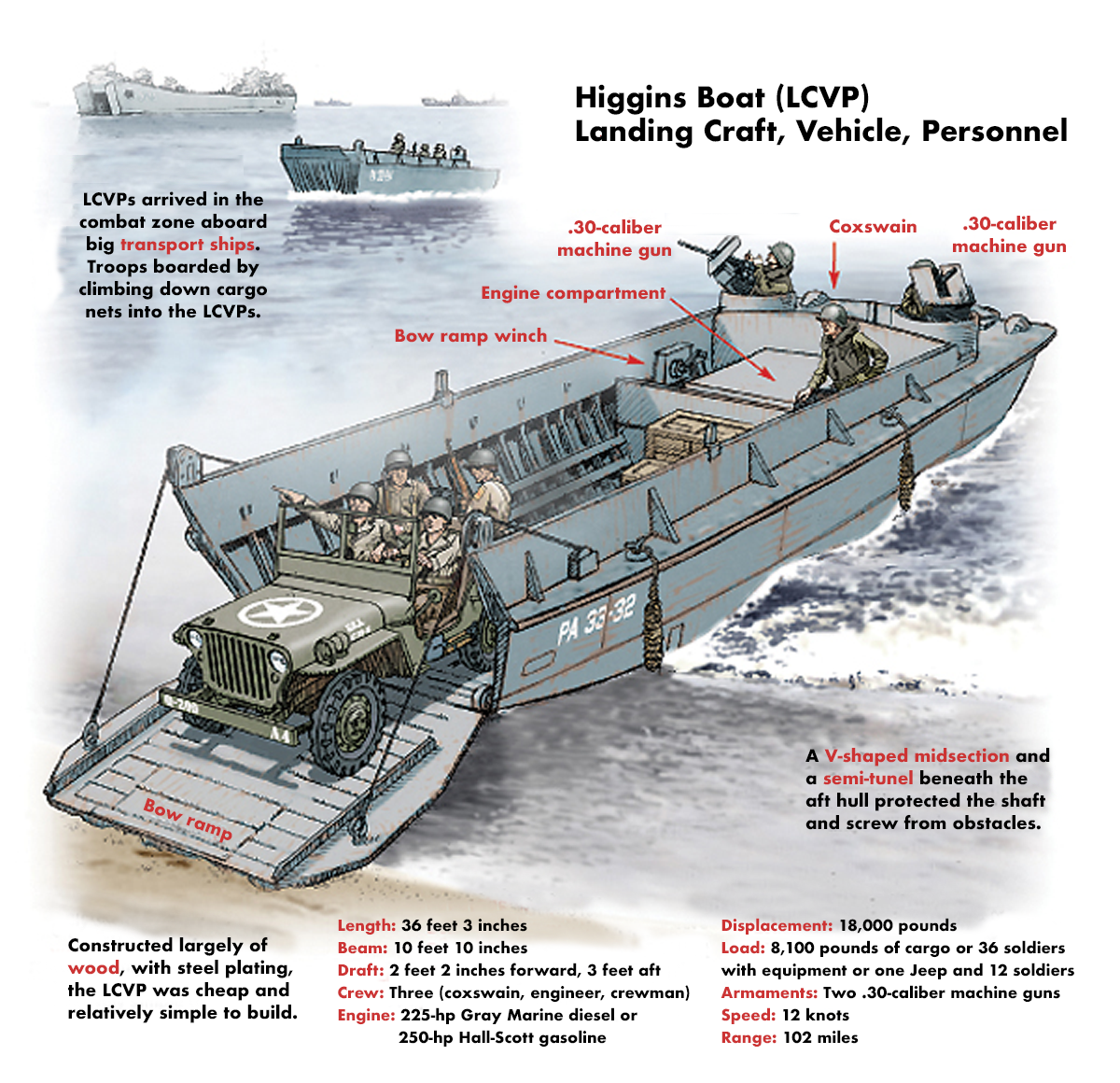
Click to zoom.
The Supreme Allied commander, General Dwight D. Eisenhower, declared the Higgins boat to have been crucial to the Allied victory on the European Western Front and the previous fighting in North Africa and Italy:
“Andrew Higgins ... is the man who won the war for us. ... If Higgins had not designed and built those LCVPs, we never could have landed over an open beach. The whole strategy of the war would have been different.”
The island-hopping campaign in the Pacific war was totally dependent on landing craft like the Higgins boat. APA troop transports, such as USS Elmore, were the mother ships for Higgins boats. In the Pacific theater, such landing craft were involved in operations at Guadalcanal, Tarawa, Peleliu, the Philippines, Iwo Jima and Okinawa. The Higgins boat was also used for amphibious landings against the Nazis, including Operation Overlord on D-Day in German-occupied Normandy, and, before that, Operation Torch in North Africa, Operation Shingle in the Allied invasion of Sicily, and Operation Avalanche in Italy.
Source: Wikipedia
Click to zoom.
